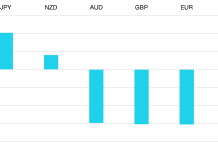Until now, we have seen how earlier versions of mutual funds came into being but we have barely even scratched the surface so far; there is a long way to go before we can begin to see the rise of modern day mutual funds. They have grown into a vast industry, which is a force to be reckoned with as more and more of them have cropped up over the past several years.
To get a better sense of how quickly this growth took place, let us look at a few numbers to help us put things into perspective. At the end of 1929, it is estimated that there were roughly 19 open-ended funds. At the same time, the number of closed-end funds dramatically rose to about 700.
This is the point on the timeline during which governments began to take notice of what was happening in the financial scenario. As a result, rules and regulations began being drafted accordingly. The need for intervention arose out of the downward spiral of the stock market at that time, which was a major crisis of its era. The effect that it had on the young industry was a sudden fall in the numbers of closed-end funds that were unable to survive the existing conditions. Open-ended funds, however, sailed smoothly through these tough times.
A regulating body called the Securities and Exchange Commissions (SEC) was formed during this phase with the hope of being able to gain better control over how the mutual fund industry worked. From here onwards, any and every new mutual fund had to be registered with the SEC before the public could get involved in any way. The Securities Act of 1933 and the Securities and Exchange Act of 1934, under which the SEC was formed, further extended the new rules and regulations. The laws that followed necessitated that the nature and details of investment be communicated to the public openly and clearly. It also meant that those who were entrusted with the task of running the fund had to constantly keep their investors up to speed with all recent happenings.
Soon after this came the Revenue Act of 1936, which laid down the criteria that was to be used with regards to the taxation of mutual funds. Four years later, the Investment Company Act presented a set of instructions that were to be followed while outlining the structure of mutual funds. Thus, one can see how the environment was rapidly changing and the traditional ways under which mutual funds previously used to work were being abandoned. Fresh and more streamlined practices were now being put into place so that the movements within the mutual fund industry could be monitored more closely and thoroughly.
Thus, over the course of the next few years, the growth of the industry was rather stunted and hardly any iconic changes took place. However, as famous saying goes, change itself seems to be the only constant. This proved to be very true as soon as the 1950s arrived; this new decade brought with it much prosperity for the industry, allowing it to thrive once again.
The industry matured and expanded at an exponential rate as the financial markets started to stabilize once again. During the 1960s alone, about 100 mutual funds were initiated. It is estimated that by the time the 1970s came around, a staggering grand total of 48 billion dollars-worth of assets were tied to mutual funds. Two of the prominent new types of funds that surfaced during this time included the first ever index fund as well as the no-load fund. Both of these funds had a positive effect on the industry and helped it to become even larger.
Between now and then, the industry did see a few highs and lows due to changing conditions, such as the advent of technology and the recent worldwide recession of 2008. Nonetheless, it has sustained throughout all of this. Not only just that, but it also managed to retain its upward growth patterns and still continues to do so. Currently, there are more than 10,000 mutual funds in the United States of America alone. If one was to calculate the collective worth of all of these, they can easily expect them to amount to trillions of dollars.



































